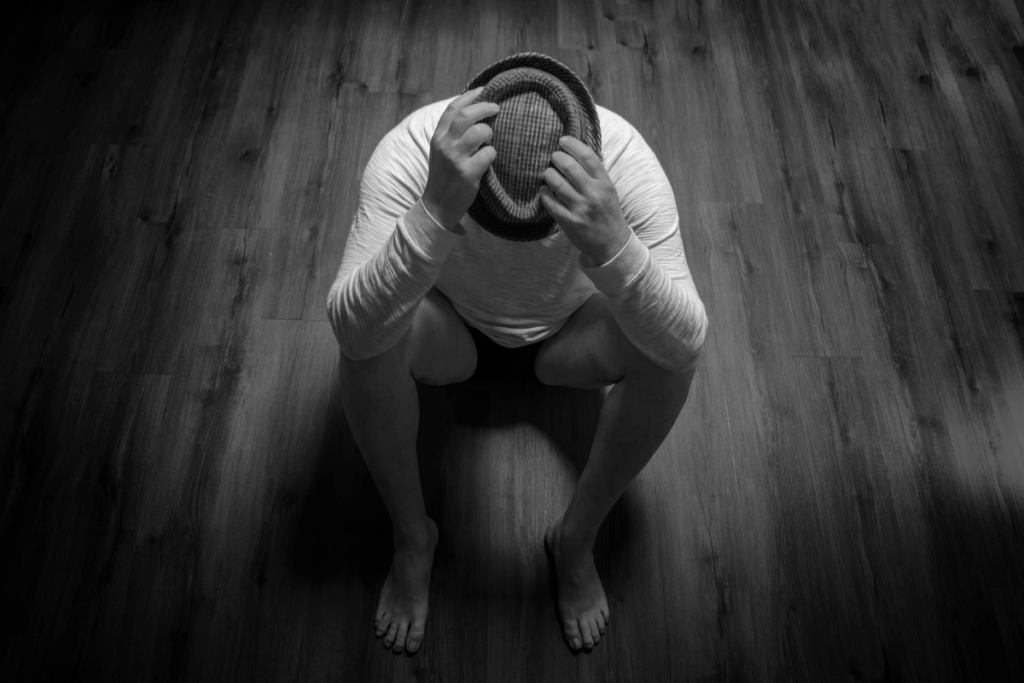Generalized Anxiety Disorder vs. Major Depressive Disorder: Symptoms, Differences, and Treatment Strategies

Sydney Johnston

Generalized Anxiety Disorder (GAD) and Major Depressive Disorder (MDD) are two of the most frequently diagnosed mental health conditions. At times, the symptoms can blur together, making it difficult to know what exactly is happening. Is it anxiety? Is it depression? Or is it both at once? Understanding how these conditions differ—and where they overlap—not only helps in making sense of the experience but also makes treatment more effective.
What is Generalized Anxiety Disorder (GAD)?
Generalized Anxiety Disorder (GAD) is a pattern of excessive, hard-to-control worry that persists most days for at least six months. The mind stays “on,” scanning for problems. The body follows with muscle tension, restlessness, and poor sleep. It often shows up in work, school, relationships, and health.
Generalized Anxiety Disorder Symptoms
GAD symptoms typically include:
- Persistent, excessive worry about multiple topics
- Feeling on edge or keyed up
- Fatigue or feeling worn down by worry
- Concentration problems or mental fog
- Irritability
- Muscle tension, aches, or jaw tightness
- Sleep disturbance (trouble falling asleep, staying asleep, or nonrestorative sleep)
These symptoms cluster with functional impairment—missed deadlines, stalled decisions, or constant reassurance-seeking.
Generalized Anxiety Disorder Treatment
First-line treatments include:
- Cognitive Behavioral Therapy (CBT): first-line therapy; helps reframe anxious thinking and reduce avoidance.
- SSRIs/SNRIs: common medications (e.g., escitalopram, sertraline, venlafaxine, duloxetine) used for long-term management.
- Buspirone: alternative for patients who cannot tolerate SSRIs/SNRIs.
- Benzodiazepines: can ease acute symptoms but carry dependency risks; recommended only for short-term use.
- Lifestyle strategies: regular exercise, consistent sleep, reduced caffeine to strengthen overall treatment outcomes.
Lifestyle supports enhance outcomes and make CBT tools easier to use.

What is Major Depressive Disorder (MDD)?
Major Depressive Disorder (MDD) is a common mood disorder that goes beyond temporary sadness or stress. It involves a persistent disruption in mood and daily functioning, often leading to loss of interest, low energy, and difficulties in maintaining relationships or work responsibilities.
Anxiety and depression frequently occur together. Research shows that nearly one in four people with MDD also meet criteria for Generalized Anxiety Disorder (GAD), which can make symptoms more severe and recovery more complex.
Major Depressive Disorder Symptoms
Common MDD symptoms include:
- Depressed mood or noticeable irritability
- Loss of interest or pleasure (anhedonia)
- Sleep changes (insomnia or hypersomnia)
- Appetite or weight changes
- Fatigue or loss of energy
- Poor concentration or indecisiveness
- Psychomotor slowing or agitation
- Feelings of worthlessness or excessive guilt
- Recurrent thoughts of death or suicide
Major Depression Disorder Treatment Strategies
For adults, evidence-based options include psychotherapy, medication, or a combination—selected through shared decision-making, symptom severity, patient preference, and prior treatment response.
Psychotherapies with strong evidence:
- CBT and Behavioral Activation (BA): target negative thought patterns, avoidance, and low reinforcement.
- Interpersonal Psychotherapy (IPT): focuses on role transitions, grief, and relationship stressors.
GAD vs. MDD: Key Differences and Common Overlap

Where they differ
- Core emotion:
- GAD → persistent worry and anticipatory fear.
- MDD → persistent low mood and loss of interest/pleasure.
- GAD → persistent worry and anticipatory fear.
- Time anchors:
- GAD → future-oriented (“what if…?”).
- MDD → present- and past-oriented (“nothing feels worthwhile”).
- GAD → future-oriented (“what if…?”).
- Body pattern:
- GAD → muscle tension, restlessness.
- MDD → psychomotor slowing or agitation; energy loss.
- GAD → muscle tension, restlessness.
- Cognitive style:
- GAD → catastrophizing, over-estimating threat.
- MDD → negative self-schema, hopeless conclusions.
- GAD → catastrophizing, over-estimating threat.
Where they overlap
- Sleep problems, concentration issues, and irritability can occur in both.
- Comorbidity is common; about 26% of adults with MDD also meet criteria for GAD in population research. When both are present, symptoms can be more severe and recovery can take longer—another reason to screen for both.
Final Thoughts
Living with GAD, MDD, or both can feel overwhelming, but these conditions are also highly treatable. With the right support, symptoms can improve, daily functioning can return, and hope can be rebuilt. Progress may not always be linear, yet every step forward matters. Effective treatment exists, and reaching out for help is often the most important first step toward feeling better.
Responsibly edited by AI
Other Blog Posts in
Animo Sano Psychiatry is open for patients in North Carolina, Georgia and Tennessee. If you’d like to schedule an appointment, please contact us.
Get Access to Behavioral Health Care
Let’s take your first step towards. Press the button to get started. We’ll be back to you as soon as possible.ecovery, together.


